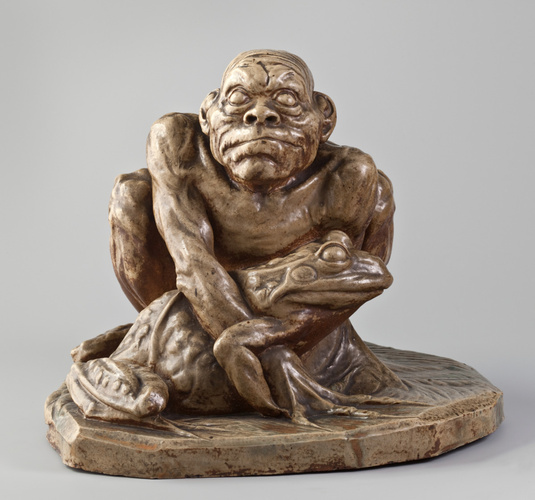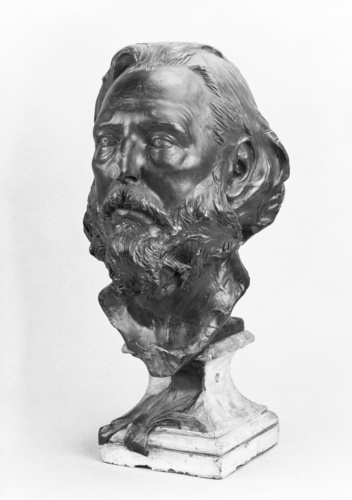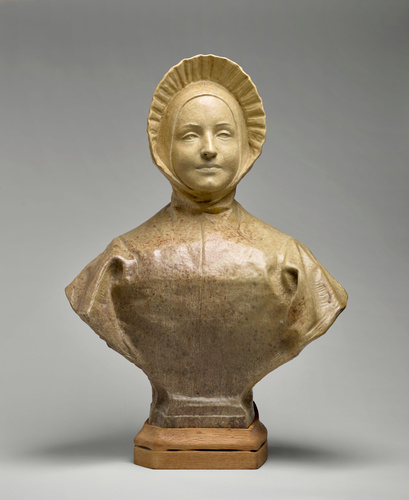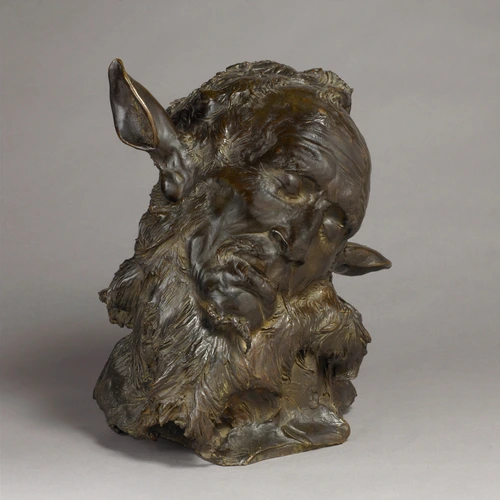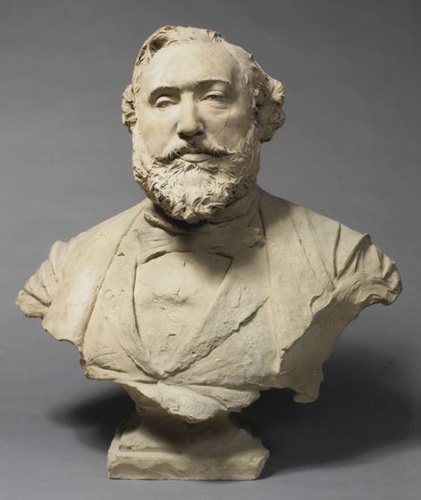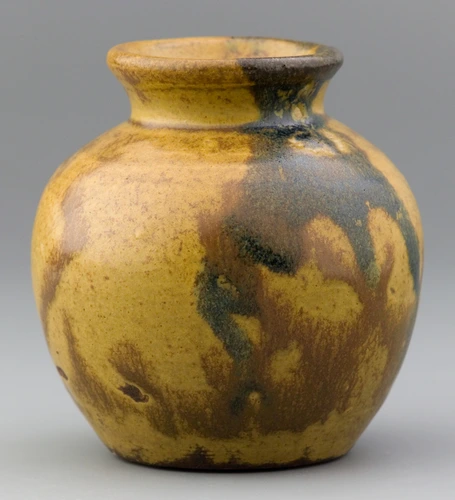Masque d'horreur
The Horror Mask can easily be dated thanks to an article by Arsène Alexandre that appeared in Paris on 24 June 1891. In the context of a visit to Montriveau (Nièvre), where the artist had a kiln and studios, the critic referred to the piece before it was fired: "This terrible mask, with its crushed, furrowed face, boiled eyes, downturned mouth and its hideous anger, a terrifying mask – the stuff of nightmares".
Therefore the mask was produced at the same time as monsters started to appear in Carriès's work. But if the discovery of Japanese art, with its Noh Theatre masks and portraits of actors, was the inspiration for several stoneware portraits, it was not the only source for them. Carriès was equally impressed by the grotesque medieval figures that adorned manuscripts and cathedrals. He also took inspiration from sculptors interested in physiognomy, like Messerschmidt, who studied both human facial grimaces and their analogies with the animal kingdom. Carriès liked to combine human and animal features in his faces which seem to be in the process of metamorphosis and which, with their fixed gaze, like Medusa's, threaten to turn the spectator to stone.
Passionate about technical aspects, Carriès was fascinated by the coloured effects that could be achieved by varying the clay, glazes and firing used for stoneware. For Horror Mask he used a light brown glaze with splashes of bile green and rust-coloured streaks. This treatment of the surface gave the work an even more harrowing and spectacular appearance.

